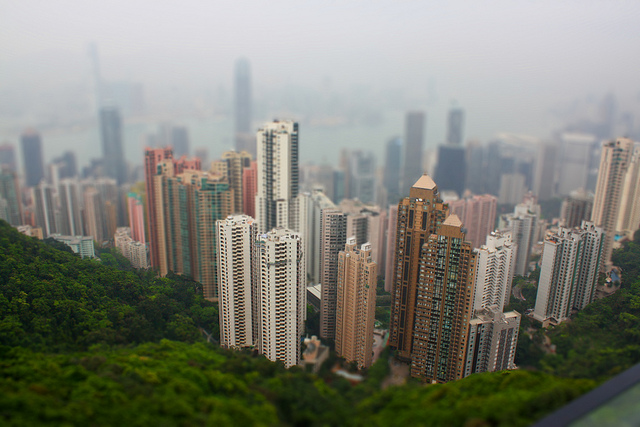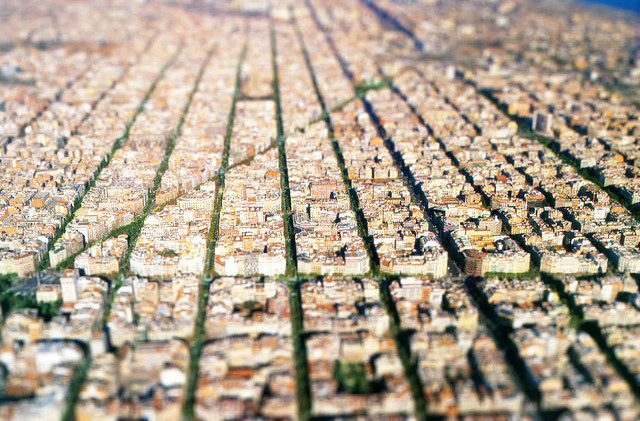
Hong Kong, Tilt and Shift
Tilt-shift photographs nowadays are mostly all about making things look miniature.
This is mostly done via post-processing with various plugins that add blur, distortion and color enhancements. This definition is actually a misnomer.
The Real Tilt and Shift
Tilt and Shift are lens motions which control perspective and the rotation of the plane of focus. The popular “Tilt-Shift effect” is actually just a misuse, not necessarily wrong, of the ability to align the focal plane for extremely deep apparent depth of focus.
The widely popular miniature effect is caused by your brain assuming the appearance of shallow focus due to the rotation of the focal plane (the blur at the top and bottom of the photograph). Close focus distances result in shallower depth of focus because the angle of light entering the lens from different objects varies more greatly, making it more difficult to get more in focus. Your eye does the same thing. Hold your finger up close to your face and focus on it. Observe the way the background defocuses compared to focusing on an object further away.
Tilt-shift Lens?
Using a tilt-shift lens to create this miniature effect is a poor imitation of this shallow depth of focus since the change in focus is a vertical or horizontal effect, rather than an effect based on depth into the image. To create a more accurate miniature effect requires manual post-processing to accurately replicate the vertical plane of focus you would see with actual close focus distances.
So what’s a “proper” tilt-shift photograph? Landscapes and architectural shots are most likely to be shot with tilt-shift lenses. These images require precision and certain effects like distortion are eliminated when using tilt-shift lenses.

Tilt and Shift, Barcelona
Using Your Wide-Angle Lens
Try shooting a tall building with your average wide-angle lens. Since you’re pointing your camera upwards, the building seems slanted, like it is about to fall. You can always point your camera straight ahead, perpendicular to the building but this will cut off the top of it. The next step would be to use a wider lens, shoot perpendicular, crop the image and fix distortions. The final output should look like an image taken with a Tilt-Shift lens. Bear in mind that a regular lens can’t outperform a tilt-shift lens in capturing what it does best. You can only achieve so much with post-processing. On the other hand, if you’re using a tilt-shift lens, you only need to shift the lens to match the camera’s angle relative to the structure you’re shooting. Unless you want the miniature effect, no need to tilt the lens.
Miniaturization of Tilt and Shift
Tilt-shift lenses are the ultimate tool for controlling every aspect of your photograph. The process is slower and more technical than with other lenses, but that is well worth the sense of satisfaction you get from creating an image exactly your way. The popular miniaturization of tilt and shift effects is not a bad thing as it introduces a lot of photographers to the actual mechanics of tilt and shift photography.






